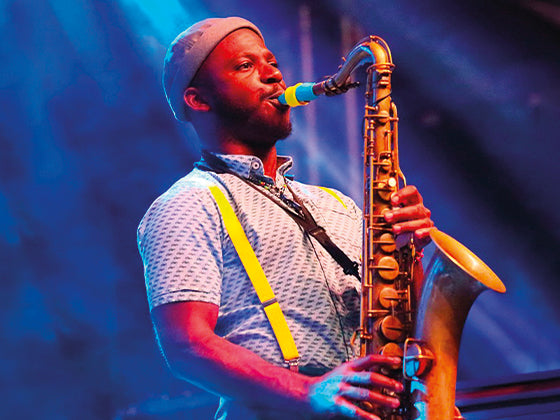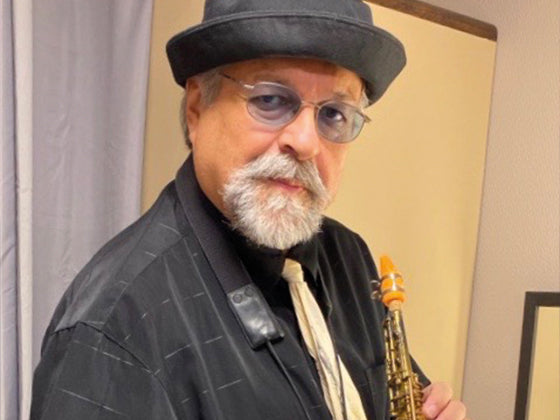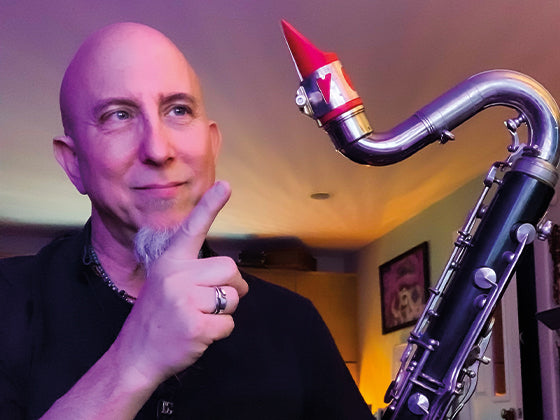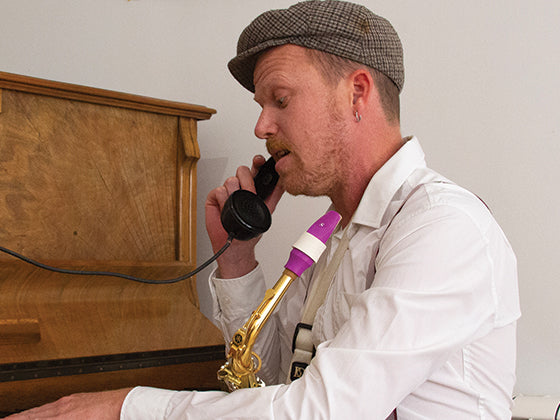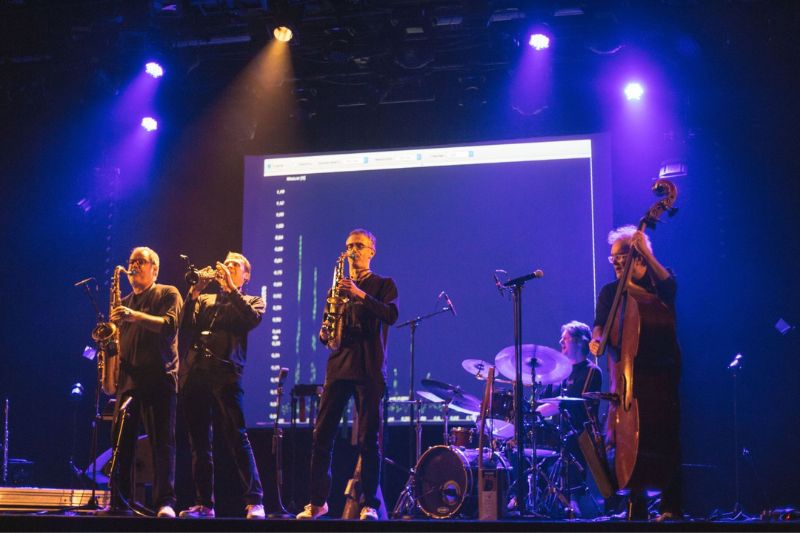The creation of the saxophone marked a significant milestone in the world of musical instrument design. In the early 1840s, a Belgian instrument maker and musician named Adolphe Sax set out to develop an instrument that would bridge the gap between brass and woodwind instruments, combining the agility and projection of brass instruments and the expressive qualities and flexibility of woodwinds. What emerged from his efforts was the saxophone, a versatile and expressive instrument that would go on to leave an indelible mark on music.
Adolphe Sax's innovative vision led to the birth of the saxophone family, encompassing various sizes and pitches. Through careful experimentation and craftsmanship, Sax succeeded in bringing his vision to life.
The first saxophone ever created by Adolphe Sax was a baritone saxophone in F key. Completed around 1843, this large instrument with its deep, resonant tone laid the foundation for the saxophone family. It became the starting point for further refinement and development, ultimately resulting in the soprano, alto, tenor, and baritone saxophones that are widely recognized today.
In this article we will list the 4 most common saxophones and define the characteristics that differentiate them by 6 categories: Design and structure, pitch range, sound and tone, playing technique and musical applications, song examples where you can listen to saxophone.
The 4 saxophones the most popular:
Soprano saxophone

Picture: Dayna Stephens, soprano saxophone
$The soprano saxophone, with its distinctive sound and challenging nature, adds a unique voice to any musical ensemble. Its soaring melodies and bright timbre make it a captivating instrument that continues to inspire players and listeners alike.
Design and Structure:
The soprano saxophone can have two different forms: A curved shape like other saxophones, or a straight shape with a straight or curved neck. The instrument is usually made in the key of B-flat (B♭), meaning that when the sax player plays on his/her soprano saxophone a written C on the sheet music, it sounds as a B♭.
Pitch Range:
The soprano saxophone is the highest-pitched of the 4 common saxophones. It has a range extending from approximately A♭3 to E6 on the piano, although some advanced players can extend the range further in either direction.
Sound and Tone:
The soprano saxophone is usually known for its really bright sound. Nevertheless, it’s also possible to have a darker sound with a soprano saxophone depending on the mouthpiece you’re using. A good example of a dark sound with a soprano saxophone is Dayna Stephens and his extra large mouthpiece chamber.
Playing Technique:
Playing the soprano saxophone requires a slightly different technique compared to other saxophones. The small size and higher pitch of the instrument make it more challenging to control intonation and produce a full sound. Soprano saxophonists need to develop precise mouthpiece control and have a good ear for pitch. It can take some time and practice to master the soprano saxophone's unique characteristics.
Musical Applications:
The soprano saxophone can be found in various musical genres. It is often associated with jazz, where it has been prominently used by musicians like Sidney Bechet, John Coltrane, Wayne Shorter, and Steve Lacy. The soprano saxophone is also utilized in classical music, chamber ensembles, and even in some contemporary and experimental music contexts.
Famous songs where you can listen to soprano saxophone:
Pop and smooth jazz: Forever in love - Kenny G
Classic: Where the bee dances - Michael Nymann
Jazz - Born to be blue - James Carter
Pop/Rock: Englishman in New York - Sting (with a great soprano solo by Branford Marsalis)
Discover our range of soprano’s mouthpieces
Alto saxophone

Picture: Godwin Louis, alto saxophone
The alto saxophone's versatility, expressive tone, and approachable nature have made it a beloved instrument in various musical contexts. Its ability to convey both melodic sweetness and energetic brilliance has contributed to its widespread popularity among musicians of all levels.
Design and Structure:
The alto saxophone features a curved body and a curved neck. The instrument is typically tuned in the key of E-flat (E♭), meaning that when a player plays on his/her alto saxophone a written C on the sheet music, it sounds as an E♭.
Pitch Range:
The alto saxophone is pitched in the middle range of the saxophone family. It has a range extending from approximately low D♭3 to high A5 on the piano, though skilled players can extend the range further. The alto saxophone's pitch makes it a versatile instrument suitable for a wide variety of musical styles.
Sound and Tone:
According to the mouthpiece used, the alto saxophone can have a large variety of different tones. A dark sound is typically obtained with a low curved or a straight baffle and a large chamber That’s what Sarah Dunbar is playing in a context of classical music.Watch Sarah Dunbar's video
For a bright sound, it’s better to get a mouthpiece with a high step baffle and a medium or small chamber. That’s this type of mouthpiece we developped for Karsten Belt. Watch him add a solo on the song.
Playing Technique:
The alto saxophone is known for its accessible and comfortable playing characteristics. It is a popular choice for beginners due to its manageable size and ergonomic key placement. It is relatively easier to control intonation compared to the smaller soprano saxophone.
The alto saxophone is known for its ability to play fast melodic lines and technical passages with agility. In most of the cases its keys are well-positioned and proportioned for human hands and allow saxophonists to easily navigate the instrument and execute virtuoso phrases with precision.
Musical Applications:
The alto saxophone is a versatile instrument that is used in various musical genres. It is particularly prominent in jazz, where it has been a staple since the early days of the genre. Renowned saxophonists like Charlie Parker, Cannonball Adderley, and Phil Woods have contributed to the alto saxophone's prominence in jazz. Additionally, the alto saxophone is also featured in classical music, wind ensembles, marching bands, pop, rock, and R&B genres. The alto saxophone is also used in classical music more than all the other saxophone instruments.
Famous songs where you can listen to alto saxophone:
Classical music: Rhapsody for alto saxophone - Claude Debussy
Electronic music: No man no cry - Jimmy Sax
Jazz: Take Five - Paul Desmond & the Dave Brubeck Quartet
Discover our range of alto’s mouthpieces
Tenor saxophone

Picture: Tivon pennicott, Tenor saxophone
The tenor saxophone's rich, expressive sound and its ability to capture the soulful essence of jazz have made it a beloved instrument for countless musicians. Its versatility and ability to convey emotion have cemented its place in a wide range of musical genres, making it a true powerhouse of the saxophone family.
Design and Structure:
The tenor saxophone is larger than the alto saxophone and has a curved body, a curved neck with a wave shape compared to the other saxophone’s necks. The tenor saxophone is tuned in the key of B-flat (B♭) like the soprano saxophone.
Pitch Range:
The tenor saxophone is pitched lower than the alto saxophone. Its range extends from approximately low A♭2 to high E5 on the piano, although advanced players can often extend the range further. Its tessitura corresponds to about two and a half octaves, or more exactly 32 theoretical notes but high notes are easier on the tenor saxophone and many jazz musicians (as well as many classical musicians) are able to go up an octave above the normal register.
Sound and Tone:
The tenor saxophone has a wide range of tones according to the musician and the mouthpiece used with. The tenor saxophone timbre can go to really warm and dark with players like Stan Getz or Tivon Pennicott, to a tone really edgy and bright with Michael Brecker or Scott Page.
Playing Technique:
Its larger size compared to the alto saxophone may require some adjustment for players with smaller hands, but with practice, it becomes comfortable to navigate the keys and produce a resonant sound. The tenor saxophone offers a good balance between control and flexibility.
Musical Applications:
The tenor saxophone's sound is often associated with the classic sound of jazz where it has a prominent role as a solo instrument and as part of ensembles and has been favored by notable saxophonists such as John Coltrane, Sonny Rollins, and Stan Getz. It is also featured in other genres such as rock, pop, R&B, and funk. In classical music, the tenor saxophone is occasionally used in orchestral compositions and chamber music. Its versatile sound makes it a favorite choice among saxophonists in a wide range of musical settings.
Famous songs where you can listen to tenor saxophone:
Jazz: Pink Panther theme - Henry Mancini
Pop: Careless Whisper - George Michael
Rock: Money - Pink Floyd
Discover our range of tenor’s mouthpieces
Baritone saxophone

Picture: Daro Behroozi, Baritone saxophone
The baritone saxophone's commanding presence, deep resonance, and ability to hold down the low end make it an integral part of many musical ensembles. Its unique sound and powerful projection add richness and depth to the overall sound, allowing it to shine in both solo and ensemble settings.
Design and Structure:
The baritone saxophone is a substantial instrument, often standing over 3,5 feet tall when assembled. It features a curved body, a curved neck, and a large, flared bell. The instrument weighs around 11 to 13 pounds (5 to 6 kilograms). The baritone saxophone is usually tuned in the key of E-flat (E♭) like the alto saxophone. The baritone saxophone differs from other saxophones in that it has a loop in the bell, which allows the instrument to remain at a reasonable size. Another special feature is the fingering, which has an extra key to reach the low A, corresponding to the low C of the cello (other instruments only go down to B♭ ).
Pitch Range:
The baritone saxophone is the lowest-pitched saxophone of the four common saxophones. Its range extends from low D♭2 to high A♭4 on the piano, although some advanced players can extend the range further.
Sound and Tone:
The baritone saxophone has a deep, powerful, and rich tone. It possesses a strong presence and can provide a solid bass line in ensembles. As with the other saxophones of the family, the tone of the baritone saxophone can range from really dark and mellow sound (check for example the sound of Cecil Payne), to a really bright and powerful sound (Leo P or Scott Paddock).
Playing Technique:
Playing the baritone saxophone requires physical strength due to its size and weight. It requires strong breath support and embouchure control to produce a full, resonant sound. The fingerings on the baritone saxophone are similar to other saxophones, but the instrument's larger size may require some adjustment in finger placement. Developing a solid technique and control over the instrument can take time and practice.
Musical Applications:
The baritone saxophone is primarily used in jazz, big band, and funk music. It is often a part of the saxophone section, providing a low, driving bass line or harmonies. The baritone saxophone is also utilized in other musical genres, including classical music, where it is occasionally featured in orchestral compositions and chamber ensembles. Its unique sound adds depth and richness to any ensemble it is a part of.
Famous songs where you can listen to baritone saxophone:
Brass Band: Funky Town / I Feel Good - Lucky Chops
Jazz: Moanin’ - Charles Mingus
Pop Rock: Buena - Morphine
Movie : Call me Manny - Too Many Zooz (Babylon)
To summarize
|
Type |
Tune |
Range |
Dark sound examples |
Bright sound examples |
|
Soprano |
Bb |
Low A♭3 to high E6 |
Steve Lacy / Emile Parisien |
Sidney Bechet / Kenny G |
|
Alto |
Eb |
Low D♭3 to high A5 |
Paul Desmond / Art Pepper |
David Sanborn / Maceo Parker |
|
Ténor |
Bb |
Low A♭2 to high E5 |
Ben Webster / Stan Getz |
Coleman Hawkins / Michael Brecker |
|
Baritone |
Eb |
Low D♭2 to high A♭4 |
Cecil Payne / Gerry Mulligan |
LeoP / Pepper Adams |
© picture Quatuor Ophonius: CSZ photographie




